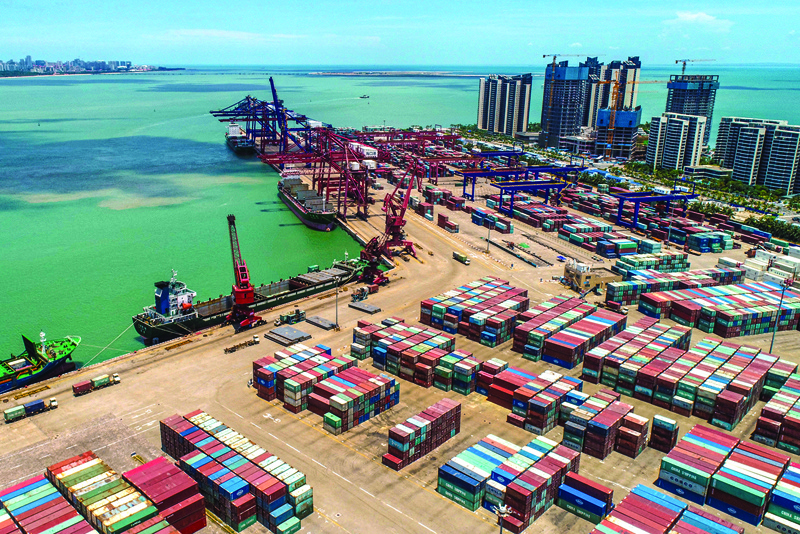 This aerial photo shows a port in Haikou in China's southern Hainan province. – AFP
This aerial photo shows a port in Haikou in China's southern Hainan province. – AFPBEIJING: Chinese retail sales grew at a slower pace than expected last month, data showed yesterday, raising concerns about the recovery in the world's number two economy. China was the first major economy to bounce back from the coronavirus pandemic thanks to tight lockdowns and mass testing, with factories doing most of the heavy lifting as companies producing everything from protective gear to electronics and other goods sold around the world.
There is a general consensus that as they slowly returned to their normal lives, the country's army of cashed-up consumers would then take over the reins, and while data in recent months has suggested that was the case the latest figures show the rebound will not be smooth. Retail sales expanded 17.7 percent on-year in April, according to the National Bureau of Statistics (NBS), well below the 25 percent forecast in a Bloomberg survey and almost half the previous month's reading. The exceptionally high figures are mostly down to the fact they have a very low base of comparison owing to the economy essentially shutting down last year.
UOB economist Ho Woei Chen told AFP this was the "more worrying aspect", given that retail sales was expected to take over the lead in driving growth from the second and third quarters on. "Private consumption is expected to pick up going forward, but the April data shows it is still lagging," she said, adding that consumer caution due to virus-related uncertainties was likely behind this.
Analysts expect faster retail sales growth in May, as China's army of consumers came out in force during the Labour Day holiday. But Nomura chief China economist Lu Ting cautioned: "The recent small virus outbreak in Anhui and Liaoning provinces may have some small impact on recovery momentum of the hospitality services sectors."
Urban jobless rate falls
There are also concerns that surging inflation could dent the economic recovery, with prices expected to spike over the next few months as life gets back to normal and people spend. The country's factory prices rocketed at their fastest pace in nearly four years last month, driven by a sharp rise in demand for key commodities such as copper and iron ore, and observers say those rises could seep through to consumers. Meanwhile, industrial output rose 9.8 percent, in line with forecasts but also slower than March.
"Production demand continued to grow... and the economy continued to stabilize and resume development," said NBS spokesman Fu Linghui, though he cautioned that the global epidemic situation remained "complicated, and the recovery of the world economy is very uneven". Julian Evans-Pritchard, senior China economist at Capital Economics, added that month-on-month changes showed "momentum in industry continued to soften", partly due to supply constraints.
Still, there was more positive news on unemployment, with the urban jobless rate falling to 5.1 percent, which UOB's Ho said was the most positive of Monday's data, given it is the "lowest since November 2019". "If the labor market continues to improve, there are prospects for retail sales to improve further," she said.
With vaccines being rolled out around the world, especially in the key US market, and economically painful lockdowns being eased, demand for China's goods picked up this year after falling off a cliff in 2020. Analysts say that April's data points to a more moderate growth outlook in the second quarter. "We expect a slightly weaker industrial production growth in May," said Nomura's Lu. This was likely weighed down by new environmental policies, he said, even as strong export growth will continue to bolster output. - AFP










